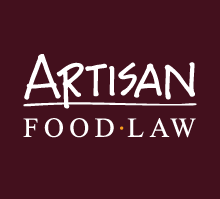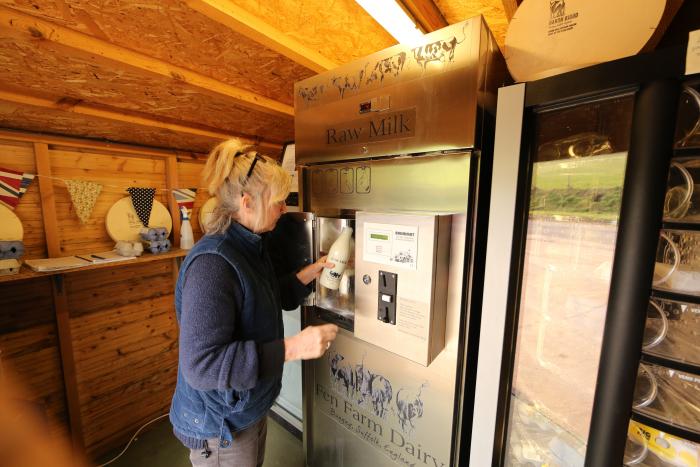Let dairy farmers safely meet consumer demand for raw milk
Survey data commissioned by the Food Standards Agency revealed that 77% of those surveyed supported continued sales of raw drinking milk and while 20% expressed interest in buying or consuming raw milk only 3% do so regularly. In short there is significant unmet consumer demand which raw milk vending machines could do much to meet.
The FSA, however, has a problem with raw milk vending machines. “Selfridges' raw milk dispenser 'contravenes food hygiene regulations'” was the news headline back in December 2011 which broke shortly before the FSA decided, in March 2012, that it would undertake a review of the regulations governing the sale of raw drinking milk.
The FSA’s position on raw milk vending machines appears to be:
- Sales from vending machines on farm premises or at a farmers market are permitted.
- Raw milk vending machines cannot be placed in ‘retail outlets’.
- Sales from vending machines located remotely from the farm are not permitted.
The FSA has, at no time, offered any rationale in law in support of these statements. The recently published Impact Assessment on the Review of the Controls Governing the Sale and Marketing of Unpasteurised, or Raw Drinking Milk and Raw Cream (RDM) in England, Wales and Northern Ireland provides none and despite highlighting ‘public health risks associated with these developments’ provides no information about the nature or extent of these risks. Where is the science on which the FSA is so fond of basing its decisions?
Raw milk vending machines located off the farm in ‘retail outlets’ are not permitted because, says the FSA, they are not ‘manned by the farmer or their representative.’[1] Steve Hook demonstrated the flaws in this assumption when placing his vending machine in Selfridges. A vending machine dispenses raw milk in a manner which is safe or not safe, it cannot become unsafe because of the place where it is located.
The FSA is in danger of muddled thinking which serves only to create confusion for those dairy farmers who simply wish to sell raw milk lawfully. The present review is a golden opportunity to bring some clarity and consistency of approach to the law which appears not to be being taken.
The present regulations[2] set out a fundamental rule that raw cows’ milk intended for direct human consumption may only be sold by the farmer occupier of a production holding “at or from the farm premises … to the final consumer”. The shortest possible food chain, but where a concession is given to a person operating a traditional milk round.
What was clearly first and foremost in the minds of those responsible for the legislation was the need to preserve the quality and integrity of raw cows’ drinking milk from farmer to consumer. A principle of direct distribution which is unarguable.
It has long been established that “from the farm” includes sales at farmers’ markets and the FSA, quite rationally and sensibly, accept that direct internet sales are also permitted. These routes to market are within the letter and spirit of the law and apply the principle of direct distribution. Raw milk vending machines work in the same way.
Steve Wearne, the FSA’s Head of Policy, recognises that there is a balance to be struck:
“… we acknowledge there is a market for raw milk and strong support for consumers to be allowed to make informed choices. Our preferred approach therefore seeks to strike the right balance between allowing consumer choice and protecting public health.”
Raw milk vending machines located at a distance from the farm raise no new issues of law or public health concerns. Rather than hand down confused interpretations of the law and claim unspecified public health risks, the FSA would do far better to work in partnership with raw milk producers in pursuit of a common aim – the sale of safe raw drinking milk.
This situation cries out for an agreed voluntary code of practice, an approach which in other areas the FSA appear keen to pursue. A voluntary code would ensure a consistent approach is taken and could cover areas in which a legitimate concern may arise, for example, including:
- The appropriate specification for raw milk vending machines.
- Approved practice for the stocking and re-stocking of vending machines.
- The approach to be taken in ensuring that a vending machine is appropriately ‘manned by the farmer or their representative.’
- The criteria for determining suitable locations for placing vending machines.
- The distance or radius from the farm within which vending machines should be located. Some farms selling pasteurised milk already provide models of good practice.
So how about it? The FSA has a chance to demonstrate that it cares as much about small hard-pressed dairy farmers as their bigger industry counterparts. Small family dairy farms need the capacity to turn to new ideas and innovate in order to survive. The demand for raw milk from consumers clearly exists. Dairy farmers should be allowed, within the limits of the law and without risk to public health, the freedom to respond and meet that demand. Consumer choice is nothing if there is no opportunity for it to be exercised.
[1] Impact Assessment on the Review of the Controls Governing the Sale and Marketing of Unpasteurised, or Raw Drinking Milk and Raw Cream (RDM) in England, Wales and Northern Ireland, Annex 1, page 53, paragraph 5
[2] The Food Safety and Hygiene (England) Regulations 2013, Schedule 6





